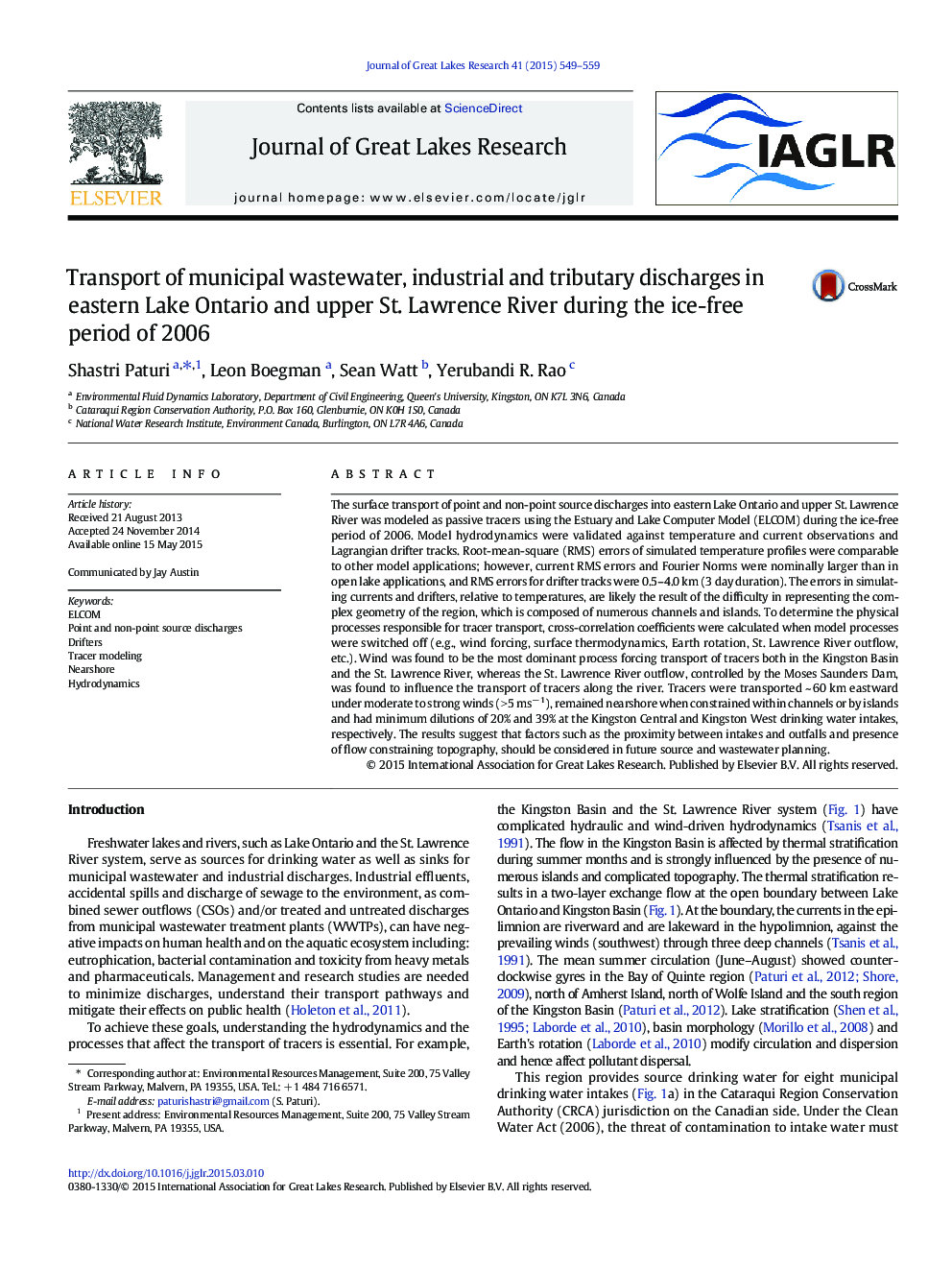| کد مقاله | کد نشریه | سال انتشار | مقاله انگلیسی | نسخه تمام متن |
|---|---|---|---|---|
| 6305035 | 1306679 | 2015 | 11 صفحه PDF | دانلود رایگان |
عنوان انگلیسی مقاله ISI
Transport of municipal wastewater, industrial and tributary discharges in eastern Lake Ontario and upper St. Lawrence River during the ice-free period of 2006
ترجمه فارسی عنوان
حمل و نقل فاضلاب شهری، تخلیه صنعتی و جوی آب در دریاچه شرقی انتاریو و رودخانه سنت لارنس در طول دوره یخبندان سال 2006
دانلود مقاله + سفارش ترجمه
دانلود مقاله ISI انگلیسی
رایگان برای ایرانیان
موضوعات مرتبط
مهندسی و علوم پایه
علوم زمین و سیارات
علوم زمین و سیاره ای (عمومی)
چکیده انگلیسی
The surface transport of point and non-point source discharges into eastern Lake Ontario and upper St. Lawrence River was modeled as passive tracers using the Estuary and Lake Computer Model (ELCOM) during the ice-free period of 2006. Model hydrodynamics were validated against temperature and current observations and Lagrangian drifter tracks. Root-mean-square (RMS) errors of simulated temperature profiles were comparable to other model applications; however, current RMS errors and Fourier Norms were nominally larger than in open lake applications, and RMS errors for drifter tracks were 0.5-4.0 km (3 day duration). The errors in simulating currents and drifters, relative to temperatures, are likely the result of the difficulty in representing the complex geometry of the region, which is composed of numerous channels and islands. To determine the physical processes responsible for tracer transport, cross-correlation coefficients were calculated when model processes were switched off (e.g., wind forcing, surface thermodynamics, Earth rotation, St. Lawrence River outflow, etc.). Wind was found to be the most dominant process forcing transport of tracers both in the Kingston Basin and the St. Lawrence River, whereas the St. Lawrence River outflow, controlled by the Moses Saunders Dam, was found to influence the transport of tracers along the river. Tracers were transported ~ 60 km eastward under moderate to strong winds (> 5 msâ 1), remained nearshore when constrained within channels or by islands and had minimum dilutions of 20% and 39% at the Kingston Central and Kingston West drinking water intakes, respectively. The results suggest that factors such as the proximity between intakes and outfalls and presence of flow constraining topography, should be considered in future source and wastewater planning.
ناشر
Database: Elsevier - ScienceDirect (ساینس دایرکت)
Journal: Journal of Great Lakes Research - Volume 41, Issue 2, June 2015, Pages 549-559
Journal: Journal of Great Lakes Research - Volume 41, Issue 2, June 2015, Pages 549-559
نویسندگان
Shastri Paturi, Leon Boegman, Sean Watt, Yerubandi R. Rao,
